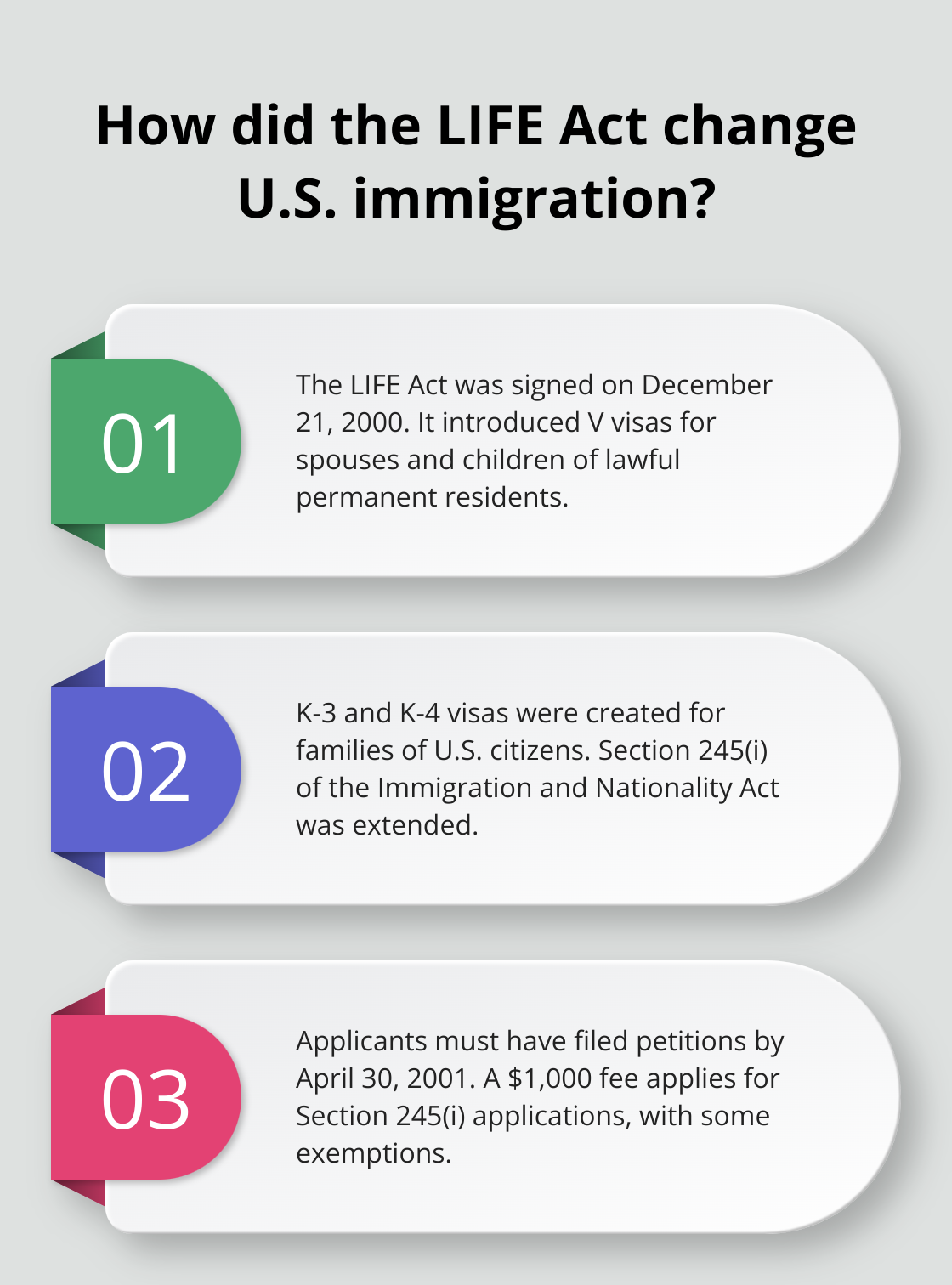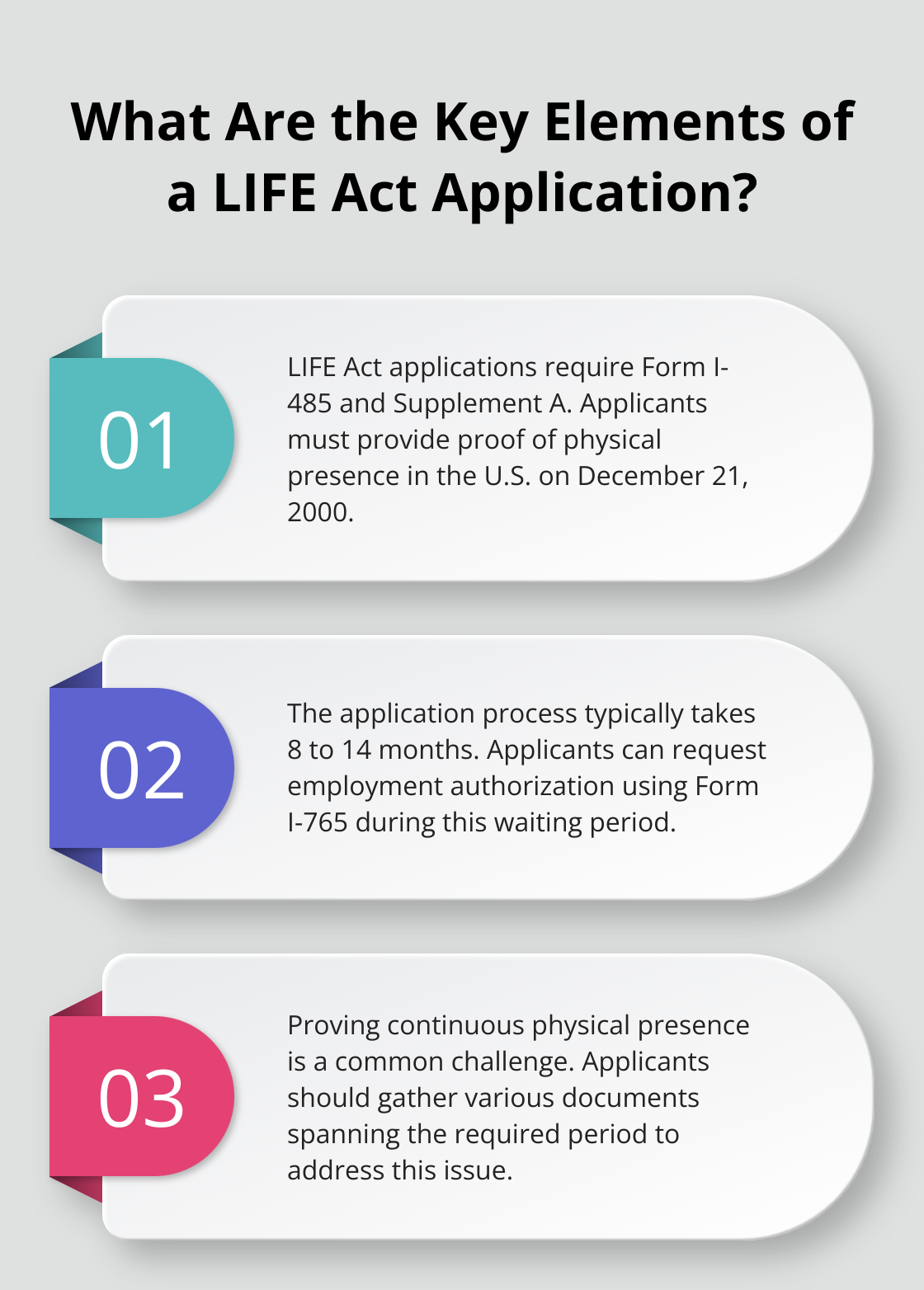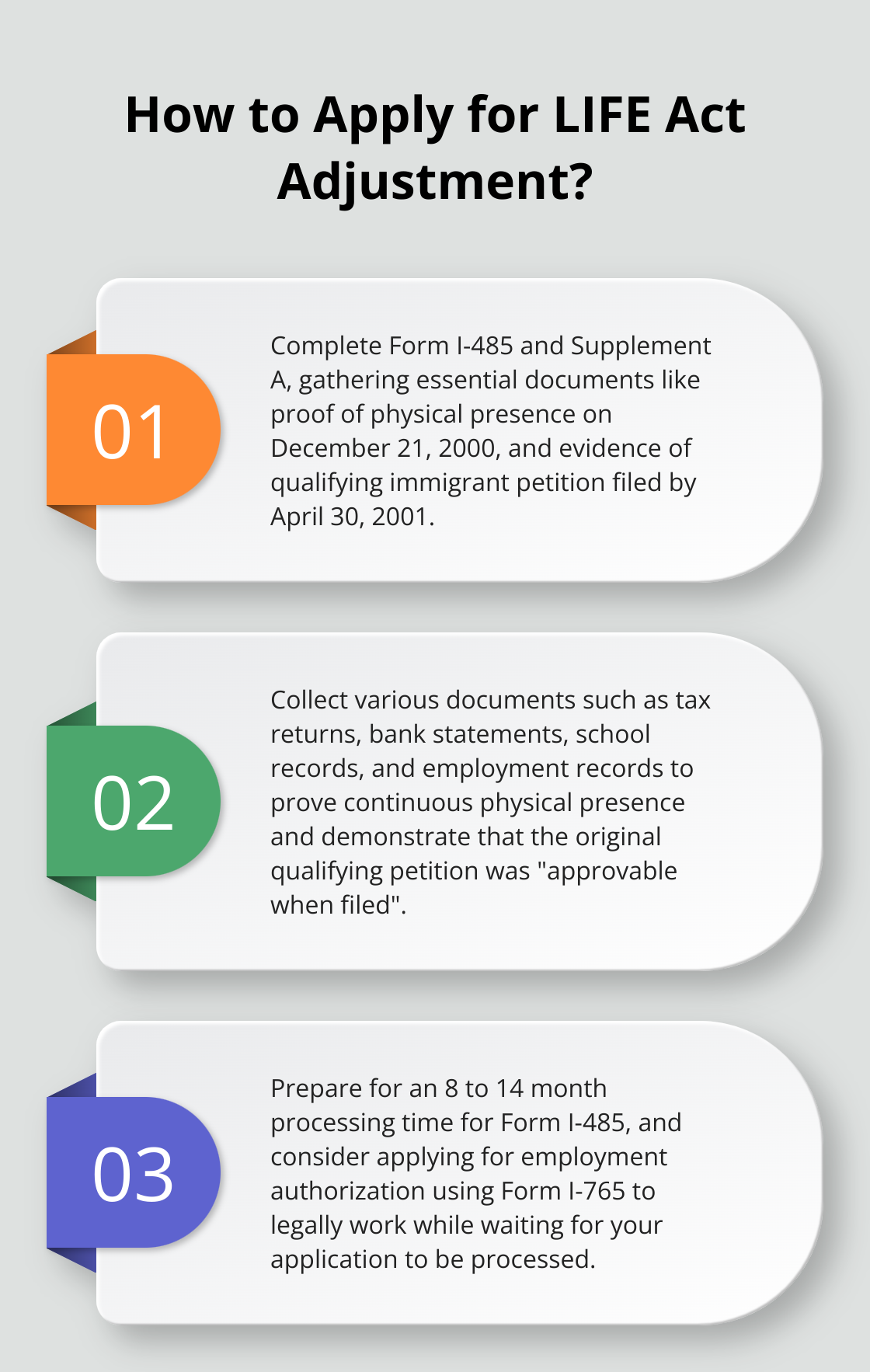
Legal Immigration Family Equity: What You Should Know
The Legal Immigration Family Equity (LIFE) Act has been a game-changer in U.S. immigration policy. This legislation has opened doors for countless families seeking to reunite and build their lives in America.
At Law Offices of Jeffrey A. Thompson, we’ve seen firsthand how the LIFE Act has transformed the immigration landscape. In this post, we’ll break down what you need to know about this important law and how it might affect your immigration journey.
What Is the LIFE Act?
The Legal Immigration and Family Equity Act (LIFE), signed by President Bill Clinton on December 21, 2000, transformed U.S. immigration policy. This landmark legislation addressed long-standing issues in family-based and employment-based immigration, particularly for immigrants from countries like India, China, and Mexico, where demand significantly exceeded annual caps.
Key Provisions and Benefits
V Visas
The LIFE Act introduced V visas, allowing spouses and minor children of lawful permanent residents to enter the U.S. and work while awaiting immigrant visa processing. This change reduced family separation during the often lengthy immigration process.
K-3 and K-4 Visas
The Act created K-3 and K-4 visas for spouses and children of U.S. citizens. These visas enable family members to enter and stay in the U.S. while their immigration applications are pending, promoting family unity.
Section 245(i) Extension
The LIFE Act extended Section 245(i) of the Immigration and Nationality Act. This provision allows certain undocumented immigrants to adjust to lawful permanent resident status without leaving the country (provided they pay a penalty fee). This has helped many families who would otherwise face separation or lengthy waits abroad.
Eligibility and Application Process
To qualify for benefits under the LIFE Act, individuals must have had an immigrant petition or labor certification application filed on their behalf by April 30, 2001. This cutoff date is important and has affected many applicants seeking status adjustment.

For those applying under Section 245(i), it’s necessary to provide proof of physical presence in the U.S. on December 21, 2000 (if required based on the petition conditions). The application process involves completing Supplement A to Form I-485 and paying an additional fee of $1,000 (unless exempt).
Ongoing Impact and Considerations
The LIFE Act has reunited families and provided pathways to legal status, but immigration laws continue to evolve. As of February 2025, applicants should stay informed about any changes that might affect their eligibility or application process.
It’s important to note that while the LIFE Act provides significant benefits, it doesn’t override grounds for inadmissibility. Individuals may still need to seek waivers for certain immigration violations or other issues that could affect their eligibility for a Green Card.
The complexity of the LIFE Act and its ongoing impact on immigration policy underscores the importance of professional legal guidance. In the next section, we’ll explore how the LIFE Act has specifically impacted family-based immigration and the procedures for adjusting status.
How the LIFE Act Transforms Family-Based Immigration
Accelerating Family Reunification
The LIFE Act has revolutionized family reunification in the United States. Before this legislation, families often endured years of separation due to lengthy visa processing times. The introduction of V visas for spouses and children of lawful permanent residents changed this landscape dramatically. These visas now allow family members to enter the U.S. and work while their immigration cases are pending, which significantly reduces the emotional and financial burden of prolonged separation.

Data from the Department of Homeland Security shows a 150% increase in V visas issued during the first five years after the LIFE Act’s implementation. This surge clearly demonstrates the Act’s effectiveness in addressing a critical need within immigrant communities.
Reducing Visa Backlogs
The LIFE Act has made significant progress in reducing visa backlogs, especially for family-sponsored immigrants. The extension of Section 245(i) of the Immigration and Nationality Act plays a key role in this achievement. This provision allows some undocumented immigrants to become eligible for LPR status without having to leave the United States, thereby not triggering certain bars to admission.
A Migration Policy Institute study found that approximately 400,000 individuals benefited from this provision in the first two years after the LIFE Act’s passage. This not only cleared a substantial portion of the backlog but also prevented new backlogs that would have resulted from individuals leaving the country to apply for visas.
Transforming Status Adjustment Procedures
The LIFE Act has fundamentally altered status adjustment procedures. The introduction of K-3 and K-4 visas for spouses and children of U.S. citizens has streamlined the process of obtaining lawful permanent residence. These visas allow family members to enter the U.S. and apply for adjustment of status without waiting for consular processing abroad.
Many immigration law firms (including the Law Offices of Jeffrey A. Thompson) have observed an increase in successful adjustment of status cases since the implementation of these provisions. The ability to remain in the U.S. during the adjustment process has not only kept families together but has also allowed applicants to continue working and contributing to their communities.
Promoting Family Unity
The LIFE Act emphasizes the importance of family unity in the immigration process. By allowing certain family members to enter and stay in the U.S. while their applications are pending, the Act reduces the stress and uncertainty associated with immigration procedures. This approach aligns with the broader goal of U.S. immigration policy to support and maintain family structures.
As we move forward, it’s important to understand how to apply for benefits under the LIFE Act. The next section will provide a detailed guide on the application process, required documentation, and common challenges applicants may face.
How to Apply for LIFE Act Benefits
Essential Documentation
The application process for LIFE Act benefits starts with collecting necessary documents. These typically include:
- Form I-485 (Application to Register Permanent Residence or Adjust Status)
- Supplement A to Form I-485
- Proof of physical presence in the U.S. on December 21, 2000 (if applicable)
- Evidence of the qualifying immigrant petition or labor certification filed on or before April 30, 2001
- Two passport-style photos
- Form I-864 (Affidavit of Support)
- Medical examination results (Form I-693)
- Copy of birth certificate and passport

The U.S. Citizenship and Immigration Services (USCIS) reports that incomplete documentation causes many application delays. To avoid this, applicants should double-check all documents before submission.
Application Timeline
The application process for LIFE Act benefits takes time. USCIS typically needs 8 to 14 months to process Form I-485. However, this timeline varies based on the specific USCIS office and the complexity of each case.
During this waiting period, applicants can request employment authorization using Form I-765. This allows legal work in the U.S. while the application pends.
Overcoming Common Challenges
Applying for LIFE Act benefits presents several hurdles. One frequent issue involves proving continuous physical presence. To address this, applicants should gather various documents such as tax returns, bank statements, school records, and employment records spanning the required period.
Another challenge requires demonstrating that the original qualifying petition was “approvable when filed.” This means showing that the petition met all substantive requirements at the time of filing (even if it faced later withdrawal or denial). Working with an experienced immigration attorney can help navigate this complex requirement.
Many applicants struggle with the Section 245(i) penalty fee. While this fee cannot receive a waiver, applicants should view it as an investment in their future in the U.S. Some find success in setting up payment plans or seeking assistance from community organizations.
Legal Assistance
The complexity of LIFE Act applications often necessitates professional legal help. An experienced immigration attorney (such as those at Law Offices of Jeffrey A. Thompson) can provide invaluable guidance through each step of this process. They ensure that applications meet all requirements and stand the best chance of approval.
Final Thoughts
The Legal Immigration Family Equity (LIFE) Act has transformed U.S. immigration policy, offering hope to families seeking reunification and lawful status. It streamlined processes, reduced visa backlogs, and prioritized family unity in ways that continue to impact immigration today. The Act’s provisions for various visas and the extension of Section 245(i) created vital pathways for immigrants to navigate the complex U.S. immigration system.

The LIFE Act’s principles continue to influence immigration policy discussions, emphasizing family reunification and providing opportunities for status adjustment. Its complexities underscore the need for expert legal guidance when pursuing benefits under the Act. Understanding eligibility requirements, gathering documentation, and navigating the application process often requires professional assistance.
At Law Offices of Jeffrey A. Thompson, we specialize in guiding clients through immigration law intricacies (including LIFE Act applications). Our team understands the challenges and opportunities this legislation presents. We work to help families achieve their immigration goals and realize the dream of a stable, united family life in the United States.


